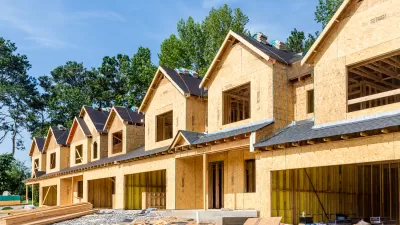A new law hopes to expunge the "impulse and accessibility" aspect of suicides from new or rebuilt bridges by requiring that they "consider" suicide barriers. The price for barriers can be greatly reduced when evaluated in the planning phase.
AB 755 "moves the state to begin evaluating the need for such barriers or other prevention efforts on new bridges", stated the author, Assemblyman Tom Ammiano (D-San Francisco) in his press release. He had served 12 years on the Golden Gate Bridge & Transportation District. While the Golden Gate Bridge, where "more than 1,600 people have jumped and fallen 200-plus feet into the bay", has not approved a barrier but a stainless steel net in 2008, it has yet to allocate the $40 million to $50 million to fund it, writes Melody Gutierrez.
Those who advocate suicide barriers on California's bridges say the jump is about impulse and accessibility. Stopping someone from jumping the first time is often enough, whether it's from the Foresthill Bridge [in Placer County, where Gutierrez wrote the story], which is the fourth-highest bridge in the United States [and the highest in California at 730 feet above the American River], or the Golden Gate Bridge, where more people have committed suicide than anywhere else in the world.
Barrier advocates "point to a 1978 study by Richard Seiden of UC Berkeley, who tracked 515 people who were prevented from jumping off the Golden Gate Bridge between 1937 and 1971. Seiden's research found that only 6 percent went on to commit suicide after their failed attempt." [This study is also cited in our 2008 post on this topic, "If You Prevent It, They Won't Do It".]
A key group behind the new law is the Bridge Rail Foundation, which "has has one simple goal - stop the suicides on the Golden Gate Bridge."
With the emphasis on preventing bridge suicides, it was surprising to some that the new eastern span of the Bay Bridge, which opened Sept. 2, lacks such a barrier.
A jump from the new Bay Bridge probably won't kill anyone because it's not high enough. That's the explanation Ammiano said he was given when he asked state officials whether suicide barriers had been considered during construction of the $6.3 billion eastern span.
After considerable opposition from groups representing local city and county governments, the bill was amended to state that "the new law would be satisfied by including a document in project study reports that show a suicide barrier was considered during the construction of a new bridge or replacement of one with a history of suicides," writes Gutierrez.
FULL STORY: Suicide barriers back in spotlight with Calif. law

Pennsylvania Mall Conversion Bill Passes House
If passed, the bill would promote the adaptive reuse of defunct commercial buildings.

Planning for Accessibility: Proximity is More Important than Mobility
Accessibility-based planning minimizes the distance that people must travel to reach desired services and activities. Measured this way, increased density can provide more total benefits than increased speeds.

Fair Housing Cannot Take a Back Seat to ‘Build, Baby, Build’
If we overlook fair housing principles in the plan to build US housing back better, we risk ending up right back where we started.

LA Metro Board Approves New 710 Freeway Plan
The newest plan for the 710 corridor claims it will not displace any residents.

Austin’s Proposed EV Charging Rules Regulate Station Locations, Size
City planners say the new rules would ensure an efficient distribution of charging infrastructure across the city and prevent an overconcentration in residential areas.

Making California State Parks More Climate-Resilient
A recently released report offers recommendations for keeping state parks healthy and robust, including acquiring additional land for conservation and recreation.
City of Costa Mesa
Licking County
Barrett Planning Group LLC
HUD's Office of Policy Development and Research
Mpact Transit + Community
HUD's Office of Policy Development and Research
Tufts University, Department of Urban and Environmental Policy & Planning
City of Universal City TX
ULI Northwest Arkansas
Urban Design for Planners 1: Software Tools
This six-course series explores essential urban design concepts using open source software and equips planners with the tools they need to participate fully in the urban design process.
Planning for Universal Design
Learn the tools for implementing Universal Design in planning regulations.
























